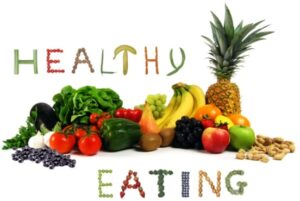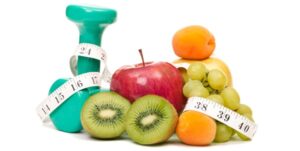Introduction
This Straight, No Chaser post is all about offering your healthy eating tips!
If you want to eat healthy, you really must learn about and try to eat in accordance with the Healthy Eating Plate. It doesn’t get more complicated that that, and you shouldn’t attempt to make it much more complicated.
Today, I’m going to speak on recommendations from the U.S. Department of Agriculture Center for Nutrition Policy and Promotion, which I’m building upon for your success. These bakers’ dozen of healthy eating tips represent simple, easy-to-do tasks to keep your meals healthy.
Your Healthy Eating Tips
- Eat at home. This accomplishes so many things. If you eat at home, you know exactly what you’re eating. That quality control is important, and it allows you to both save money and get creative in your pursuit of health.
- If possible, take the cooking out of your hands. Those of you with less self-discipline would do well to simply express your healthy desires to your loved one. Give her or him directions on your health goals and eat what’s brought to you.
- Use a smaller plate. This act with help you with portion control. If you’re one of those who must finish your plate, this will help prevent you from overeating.
- Stop eating when you’re full. The body actually is trying to tell you when you’re hungry and when you’re not. Try to overcome that voice in your head that tells you “finish your plate.” Calorie control is the vital component of health.
- Make half your plate colorful fruits and vegetables. If you just remember dark green, red and orange colors and consistently full of nutrients and healthy, you’ll do well. Think of tomatoes, sweet potatoes and broccoli as examples.
- Eat slowly. Even if you’re not chewing each morsel 20-25 times before swallowing, learning to savor your food will improve your eating experience and promote a sense of fullness and satisfaction with smaller portions. No, it won’t necessary make you want even more.
More healthy eating tips
- Lean. Protein. Limit your red meat. Learn to appreciate lean meats, such as chicken, turkey and seafood. Beans and tofu are also excellent protein sources. When you do eat beef and/or pork, ask for lean cuts.
- Seafood, not see (more) food. Make it your main course at least twice a week.
- Whole grains. Just say the words and look for the words. When you’re buying breads, look for 100% whole grain. At a restaurant? Specifically ask for whole grains in your breadbasket. You cannot assume your breads are whole grain otherwise.
- Avoid the extra fat. There’s no good in eating healthy if you cover the goodness with heavy sauces, gravies, syrups or salad dressings. Ask if low fat, low-calorie alternatives exist.
- Got dairy? Learn to move beyond whole milk. Fat-free, low-fat, soy or almond milks (or yogurt without a daily drink) are all better options and provide the same amount of calcium and other nutrients without all the fat and calories.
- Satisfy your sweet tooth in a different way. Learn to enjoy a fruit cocktail, yogurt parfait, baked apples or other healthy options as your dessert. All you’re really wanting is a dab of sugar anyway!
- Learn variety; build your choices. Have you ever tried mango, kiwi, lentils or kale? If so, did you give up after the first taste? Many healthy foods need to be prepared to your liking. Think seasonings and preparation. Get creative!
Whatever you do, fast food is not the option. Invest a touch of time into these very simple tips and undo the bad luck to be found if most of your diets.
Follow us!
Ask your SMA expert consultant any questions you may have on this topic. Also, take the #72HoursChallenge, and join the community. Additionally, as a thank you, we’re offering you a complimentary 30-day membership at www.72hourslife.com. Just use the code #NoChaser, and yes, it’s ok if you share!
Order your copy of Dr. Sterling’s books There are 72 Hours in a Day: Using Efficiency to Better Enjoy Every Part of Your Life and The 72 Hours in a Day Workbook: The Journey to The 72 Hours Life in 72 Days at Amazon or at www.jeffreysterlingbooks.com. Another free benefit to our readers is introductory pricing with multiple orders and bundles!
Thanks for liking and following Straight, No Chaser! This public service provides a sample of http://www.SterlingMedicalAdvice.com (SMA) and 844-SMA-TALK. Likewise, please share our page with your friends on WordPress! Also like us on Facebook @ SterlingMedicalAdvice.com! Follow us on Twitter at @asksterlingmd.
Copyright © 2019 · Sterling Initiatives, LLC · Powered by WordPress
















